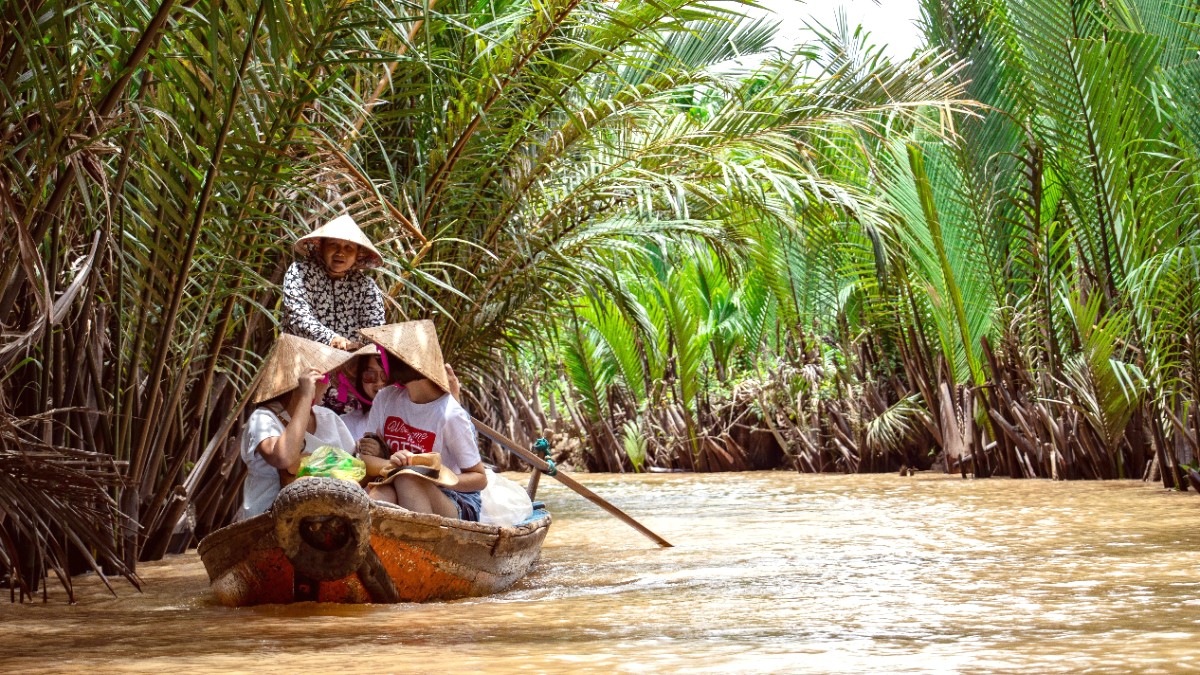
Mekong Delta, Vietnam
The historical narrative of Can Tho is deeply linked to agricultural trade and its strategic position along the river system. From its beginnings, the area served as an useful hub for the exchange of goods from the fertile delta. The river sustained and transported commerce, allowing communities to flourish.
Can Tho is the largest city within Vietnam's Mekong Delta region, situated in the southern part of the country. It rests strategically on the Hau River (Bassac River), a significant distributary of the larger Mekong River. This location makes Can Tho a natural focal point for economic activity, administration, cultural exchange, and transportation across the entire Mekong Delta.
The surrounding landscape is noticeably flat, typical of the Mekong Delta. This flatness intertwines with an expansive and complex system of rivers and canals, serving as the main arteries for local daily activities, trade, and movement. Beyond the waterways, vast stretches of rice paddies dominate the scenery, indicating the region's role as Vietnam's "rice bowl." The fertile soil, enriched by the Mekong's annual floods, supports a wealth of agricultural goods, from rice to diverse tropical fruits. The constant presence of water shapes every aspect, from structures to farming and local practices.
Can Tho's history intertwines with agricultural trade and its strategic river location. From its early days, the area served as an useful point for goods exchange from the fertile delta. The river sustained and offered a route for commerce, supporting thriving settlements. During French colonial rule, Can Tho expanded into a significant administrative and economic hub. The French recognized its strategic position, developing infrastructure that solidified its role as a regional capital. Many historical buildings in the city display this colonial influence, merging European architectural styles with local design.
Following the Vietnam War, Can Tho resumed its function as an agricultural and aquaculture center. It played an important part in fostering trade and driving development across the entire delta region. The city's continued expansion is a testament to its enduring role in the Mekong Delta's economy and culture. Its history shows adaptation, from an agrarian community to a colonial stronghold, and now, to a modern economic driver, all while maintaining its deep bond with the defining river. This ongoing transformation highlights Can Tho's capacity to adapt and prosper, embracing both its past and its future as a regional leader.
A hub for agricultural trade in the fertile delta.
Became a significant administrative and economic center.
Served as a major military base for US and South Vietnam.
Resumed role as agricultural and aquaculture center.
A thriving economic and cultural hub of the Mekong Delta.
Can Tho welcomes visitors with its blend of riverine tradition and modern progress. This introduction sets the framework for a comprehensive guide that aids in planning every aspect of your visit, from practical travel suggestions to deep cultural experiences.
The region is often called Vietnam's "rice bowl," indicating its agricultural output. Aquaculture is another major industry, focusing on the breeding and processing of pangasius catfish (basa fish) for both domestic consumption and international export.
The Hau River (Bassac River) is the main river flowing through Can Tho. This distributary of the Mekong River does more than merely transport water; it serves as the lifeblood of the city. It provides fish, enables transportation, and nourishes the surrounding agricultural lands.
Image: Can Tho City Skyline along the Hau River at sunset. Source: Wikimedia Commons.
Can Tho welcomes visitors with a blend of traditional life and modern development. This introduction sets the framework for a comprehensive guide that assists in planning every aspect of your visit, from practical travel suggestions to deep cultural experiences.
Approximately 1.25 million people (2023 estimate), offering a wide range of services.
Approximately 1,439 sq km (556 sq miles), including urban core, farmlands, and waterways.
Economy relies on agriculture (rice, fruits) and aquaculture (pangasius catfish).
Can Tho's economy mainly revolves around the export of agricultural produce and aquaculture products. This export focus drives much of the city's trade and logistics infrastructure. The floating markets visibly demonstrate this trade, with goods moving directly from farm to buyer on the river.